Implementing a by-the-glass wine program can be a dynamic and profitable way for restaurants to enhance their offerings. It enriches the customer’s experience by providing greater flexibility and choice while also giving the restaurant a chance to boost its wine sales, engage in wine education, and offer new and exciting options for both wine enthusiasts and casual diners. If done correctly, the program can become a distinguishing feature of a restaurant, attracting a loyal base of wine lovers who appreciate variety, discovery, and the opportunity to try something new with every visit.
Overall, by-the-glass wine programs enhance the customer experience by allowing customers to explore a wide variety of wines without committing to a full bottle. This is particularly attractive for diners who want to sample different types of wine to pair with various courses. They also introduce customers to new and lesser-known regions or brands, providing them with the opportunity to taste and learn about new options they might otherwise overlook. Some wines, especially those from the more obscure areas, can intimidate casual wine drinkers. Offering these wines by the glass allows guests to sample without a big commitment, which builds their confidence in trying new options. Staff can be essential in educating customers by suggesting specific pairings or encouraging them to try new wines. This personal interaction adds value to the customer’s dining experience and deepens their wine knowledge.
A by-the-glass program usually makes high-end wines more accessible to a broader range of customers. Instead of paying for a whole bottle, guests can enjoy a premium wine at a fraction of the cost. In addition, by-the-glass wine programs may also boost sales through higher profit margins, upselling opportunities, and increased volume, as more customers will likely order wine during their meals.
Efficient inventory management reduces waste and ensures stock moves smoothly through the program. Partnerships with wineries empower restaurants to offer exclusive wines and potentially provide staff with valuable wine education, ultimately enhancing the overall guest experience and driving profitability.
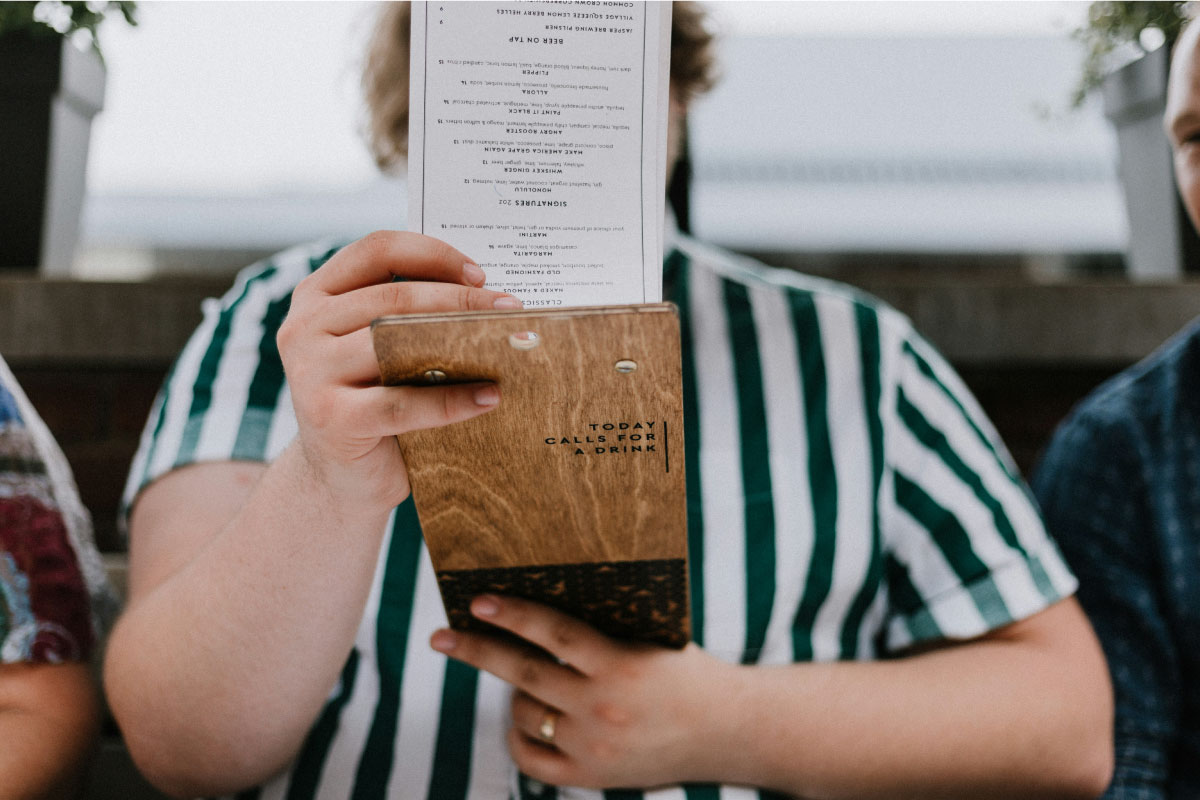
A well-curated list can create a unique selling point for the restaurant, attracting wine enthusiasts, especially with niche, seasonal, or rotating offerings.
Moreover, by-the-glass “wine flights” designate a series of little pours—often two to three ounces each—of several wines delivered in tandem as a sampling experience. Typically, these wine flights consist of three to five wines that may have a common theme, such as wines from the same area, grape varietals, seasonal trends, or even a carefully chosen assortment of flavor profiles (e.g., light to full-bodied reds or Old World vs. New World Chardonnays). The idea is to allow clients to taste a variety of wines in a single sitting without needing to purchase a full glass of each, thus broadening their selection options while creating an enjoyable and educational experience. When guests taste several wines side by side, they may draw comparisons and contrasts between them, which helps them learn about tannins, acidity, and body in wine and improve their understanding of their preferences. With this tasting method, servers and sommeliers can interact with patrons and share information about the wines, their provenance, and the best ways to pair them with food.
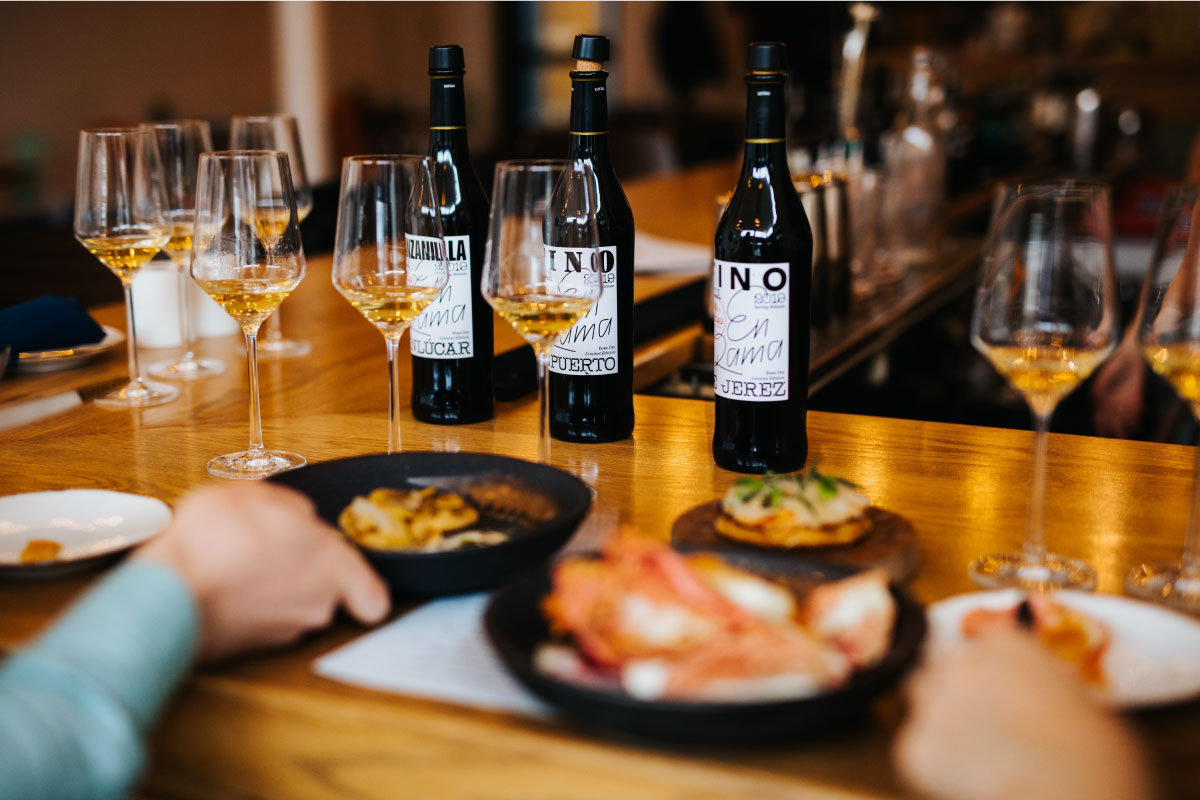
IS A SHERRY BY-THE-GLASS PROGRAM ANY MORE CHALLENGING?
It may well depend on where the restaurant is located. The success and challenges of offering a specific wine program, such as “Sherry” or “Californian wines,” primarily rely on the geographical location, local wine culture, and customer preferences at a given restaurant.
For example, a California restaurant offering Californian wines is likely to attract guests who are already familiar with or prefer local wines. The proximity to wine regions like Napa or Sonoma creates a natural interest in Californian wines. Guests may have visited the vineyards themselves, making them more eager to try local wines they recognize or even know personally. In regions where wine production is a significant part of the local economy, such as California, France, Spain, or Italy, there is often a sense of pride in consuming local products. Restaurants in these areas may experience higher demand for local wines, as customers may feel connected to their region’s wine heritage. This makes selling local wines easier, as it resonates with both local diners and tourists seeking an authentic regional experience.
Conversely, a restaurant in Spain offering Californian wines may face more challenges, as Californian wines are likely to be viewed as foreign or unheard of. In Spain, a country with a deep and rich wine tradition (particularly with its own regions like Rioja, Ribera del Duero, and Jerez), guests may be more accustomed to and favor local Spanish wines. Introducing Californian wines in this context may require more effort to educate and entice customers to try something new or outside their typical preferences. On the flip side, foreign wines may be seen as exclusive or exotic in some regions, sparking curiosity among wine enthusiasts eager to explore international varieties. In Spain, a well-crafted wine list featuring Californian wines might appeal to a niche market of wine lovers or adventurous diners interested in experiencing global flavors.
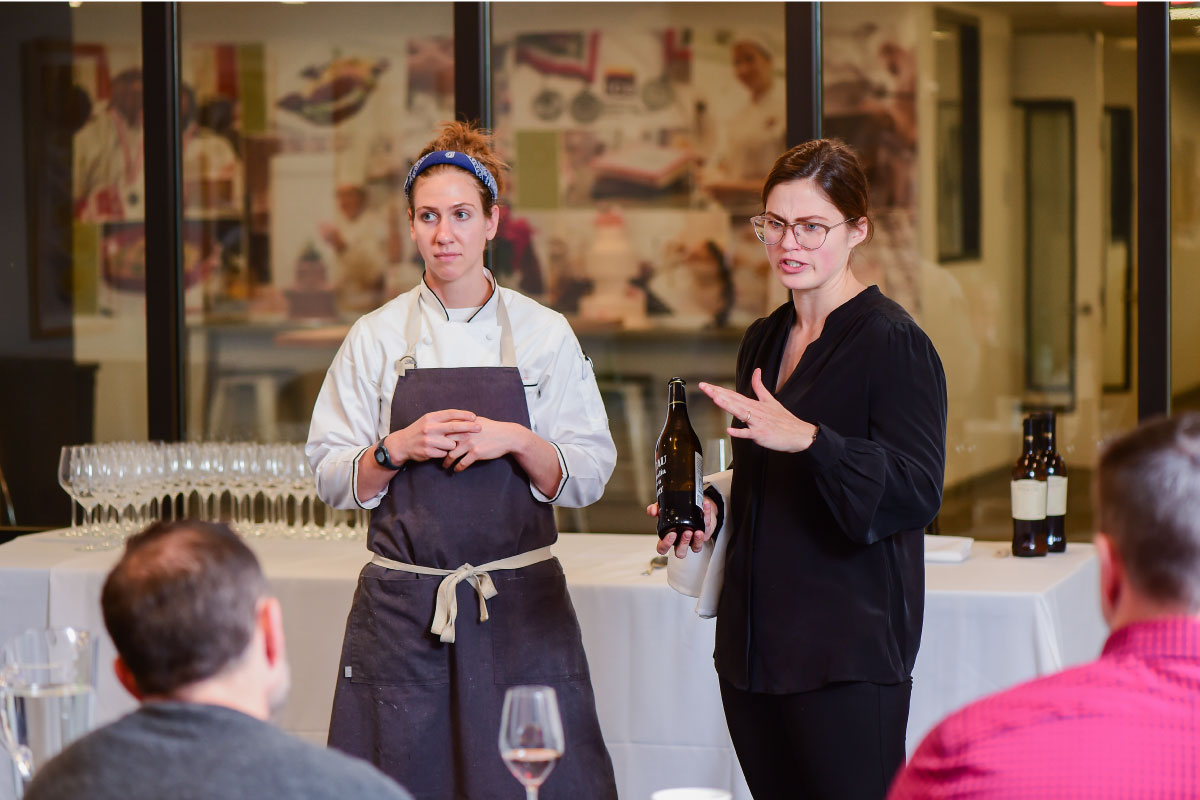
Now, a restaurant in California can easily source a wide range of local wines at reasonable prices because of its proximity to the vineyards. However, a restaurant in Spain may face higher costs and logistical hurdles when importing Californian wines, leading to higher prices on the wine list. Guests may be less willing to pay a premium for an imported Californian wine when they could opt for a high-quality local Spanish wine at a lower price. Additionally, in California, the marketing of local wines typically requires less effort, as customers may already be familiar with or exposed to these wines through tasting rooms, vineyard visits, or regional wine festivals. In Spain, however, offering a by-the-glass program with Californian wines would likely require more effort to educate customers, especially regarding the specific grape varieties, regions, and unique characteristics that distinguish these wines from Spanish offerings.
To sell foreign wines in a market dominated by local preferences, restaurants must often emphasize creative wine pairings. For instance, a restaurant in Spain offering Californian wines may need to pair them with specific dishes that highlight the wine’s qualities and make it more attractive to the local palate. This strategy could help guests experience the wine in a more approachable context. In regions with solid culinary identities, like Spain, regional wines are often seen as the ideal pairing with regional foods. A foreign wine, like a Californian Chardonnay, might not have the exact natural synergy with those dishes, potentially making it harder to incorporate into the menu without intentional pairing choices.
The key is to adapt the wine list to the context, whether emphasizing local wines or using creative strategies to introduce foreign wines in a way that appeals to the local market!
OPENING A SHERRY BAR IN THE US
The idea of opening a sherry bar in the US is intriguing, but achieving success will require careful planning to introduce clients to Andalusian cuisine and sherry while catering to regional tastes. The key is balancing the authenticity of Spanish sherry and tapas with strategies to make it approachable and exciting for a new audience. Staff and consumers can be engaged through regular tastings and workshops, and staff training is crucial to ensure they understand the various sherry styles and food combinations.
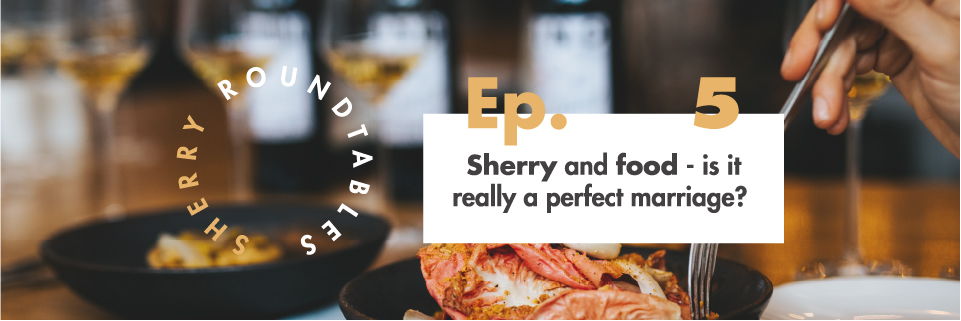
To learn more about sherry pairings and by-the-glass sherry offerings in restaurants, listen to this podcast)
Presenting carefully considered sherry-and-tapas combinations with authentic premium ingredients will accentuate the innate harmonies between the two. A focus on using high-quality olive oils and breads, fresh seafood, and ingredients imported from Spain whenever possible to enhance authenticity would be paramount. Introducing sherry-based cocktails and making sherry approachable across a range of pricing points can increase appeal; having affordable entry-level sherries for guests who may not be familiar with the drink and a ‘reserve’ list of mature sherries for those looking for a more sophisticated experience. Cultivating strong supplier ties with Spanish wine importers and distributors may ensure a constant flow of off-the-beaten-path and exiting bottlings. The bar can keep a fresh and genuine variety by maintaining efficient inventory management of the wine and rotating the menu with seasonal or uncommon offers. Additionally, creating a warm, Andalusian-inspired space with communal seating may promote social dining, which naturally lends itself to ordering multiple dishes and wines. Attracting wine connoisseurs and daring eaters via partnerships, local events, and clever marketing may generate buzz; establishing a “Sherry club” or loyalty program can also promote community by enticing members to return and providing special perks.
There is no doubt that “sherry flights” are a great technique to introduce these wines to restaurants’ guests. American customers may be unfamiliar with sherry’s varied styles, from dry fino to sweet pedro ximénez and all in between. As mentioned above, a wine flight lets customers try many styles without drinking a full glass, reducing customer risk and encouraging them to explore new things. (Flights allow inexperienced visitors to sample the region in modest amounts, reducing apprehension.) A flight lets clients experience sherry’s richness and appreciate its adaptability with food and as a drink. Presenting sherries side by side enables clients to understand the breadth of textures, flavors, and scents that may go overlooked in one glass. Staff can explain how each wine style is made, the solera maturing procedure, and its finest matches during flights.
Sherry pairs well with endless foods! A sherry flight can be coupled with small snacks or a tapas tasting menu to enhance the dining experience and show customers how to mix each wine with food. Finally, sherry flights encourage buyers to try many glasses, which can boost sales. Customers who like a sherry from the flight may order a full glass or bottle. Due to its underrepresentation in U.S. restaurants and pubs, sherry flights are unique and memorable. This can set the restaurant apart, generate excitement, and draw in diners seeking something new.
MIRADOR, THE NEWEST SHERRY BAR IN AMERICA!
A couple of weeks ago, we visited Mirador Café y Tabanco in Kingston, NY opened early this year. Mirador is inspired by the tabancos, or taverns, of Andalucía in Southern Spain. Tabancos, like English pubs and American taverns, are friendly, lively gathering places for people of all ages to enjoy food, drinks, and culture. Mirador specializes in regional wines from Andalucía, with an outstanding list of sherries and other sought-after wines from the region—but with a curated selection of the best wines from all parts of Spain, too. Also on offer are a world-class selection of vermouths and craft cocktails. After just a few months in business, Mirador was included in Esquire’s 50 Best Bars in 2024. Check out their website here!
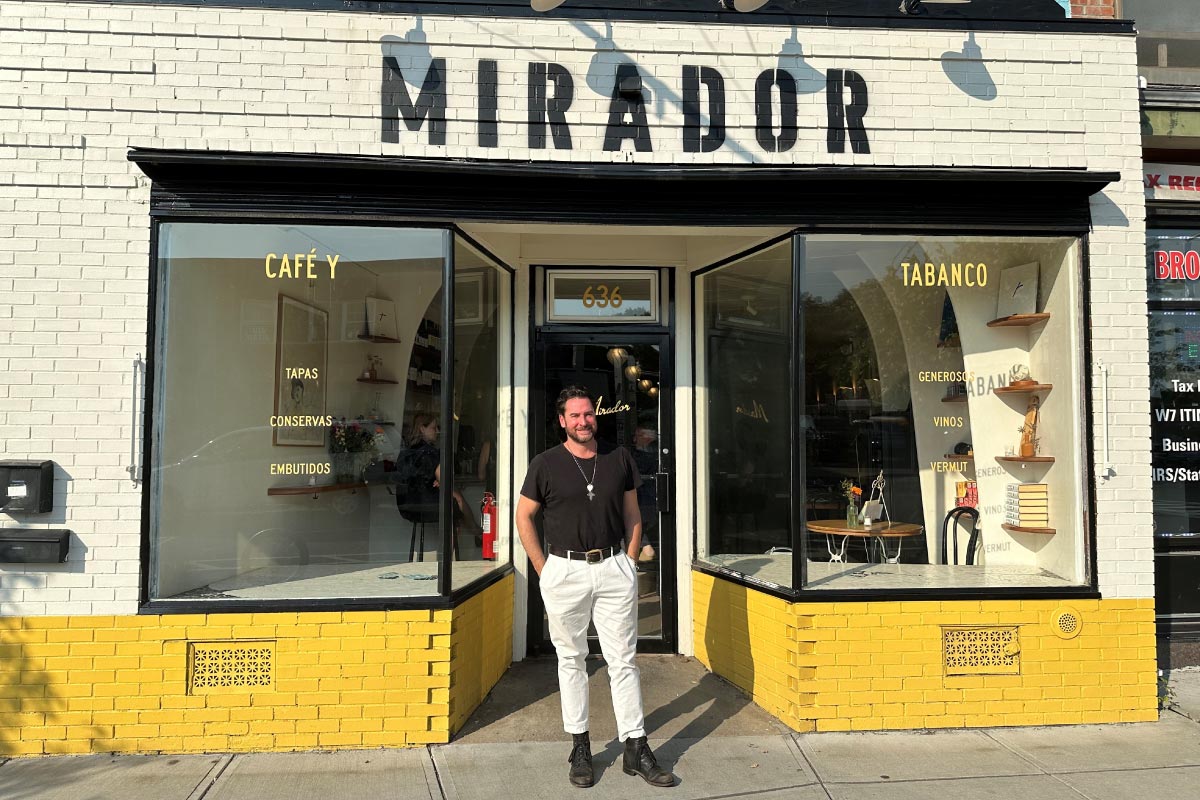
Nick Africano is the visionary behind Mirador. Nick is a Certified Sherry Educator by the Consejo Regulador and a passionate musician. His interest in Spain began at university through language and literature. It then transferred to the world of Spanish wine and culinary arts in 2008 when he got his first job in NYC with Seamus Mullen at the original Boquería. Nick continued with Seamus at NYT two-star Tertulia and El Colmado as a manager and bar manager and assisted in their wine programs. Additionally, he began En Rama Sherry Co. in 2016 with partner Dana Staley, running monthly sherry pop-ups out of Tertulia with a menu exclusively serving sherry and a rotation of diverse guest chefs from around the city and beyond. En Rama won the US Copa Jerez in 2017, the following year expanding to host events nationwide. In 2019, Nick began working for José Pastor Selections, where he created his own sherry label, a bottling project called Buelan Compañía de Sacas. Another of Nick’s achievements is establishing the United States’ first sherry wine club, Enramistas, in 2020. En Rama has also now lead the way by launching an annual sherry trade tasting, Feria En Rama.
After spending just a few hours at Mirador, Nick’s deep passion for southern Spain and its rich cultures became unmistakably clear. His love for the region floods the walls of his establishment, from the carefully curated sherry and tapas selection to the Andalusian-inspired décor. His enthusiasm extends beyond the ambiance, as Nick personally engages with patrons, sharing stories of the region’s history, cuisine, and wines, creating an immersive and unforgettable experience—in upstate NY—thousands of miles away from his beloved Jerez region. Before service began, we had the chance to sit down and discuss all things sherry. Here are a few of his many noteworthy remarks:
“After studying in Barcelona, I felt compelled to travel further south, following a wave of Spanish flamenco, music, and wine that resonated with my passion for music, literature, and regional cultures. When I heard flamenco, I thought, ‘There is a direct connection between the emotional quality and cultural fusion that I find in the old-school blues of the southern U.S., which I studied as a young musician.’ I strive to incorporate that emotional component into everything I do, especially in the restaurant world, and sherry definitely aligns with that.”
Listen to Nick Africano’s signature song: Mirador.
“Starting in 2016, under the brand En Rama Sherry & Co., during my time at Boquería in NYC, we hosted monthly events featuring sherry alongside various cuisines through pop-ups with different chefs. We did everything from American BBQ to a pizza pop-up with a Brooklyn pizzeria. We did Japanese food, Indian, Korean, you name it, and it was so much fun; we had to show the versatility and accessibility of these wines. Let’s tell people that enjoying a glass of sherry doesn’t have to be a big deal, but rather a perfect choice for various casual settings. We all should be able to go to a concert and have sherry!”

“While living in the city, I began regularly visiting the Kingston, NY area while selling wine for José Pastor and became familiar with the vibrant community of wine professionals there. When this space became available, I jumped at the opportunity and moved here permanently. Even though there’s nothing Spanish within 75 miles, I knew I’d still have access to an excellent sherry supply through the top NY-based distributors and importers, making it a no-brainer. Living in the Hudson Valley, the restaurant can easily buy the wonderful local produce, and I have access to all the sherry wines on the US market.”
“We consistently sell bottles of sherry, and I wish we sold even more. My list only features bottles on the first pages, and we always introduce sherry to our guests as ‘wine.’ However, I tend to sell more glasses than bottles by the end of the day. Offering small samples of various sherry styles provides my staff and me a great opportunity to showcase the region’s unparalleled diversity to our clientele. I’m often surprised by how many people choose the flights and genuinely enjoy them, and when they try the wines with the food…”








